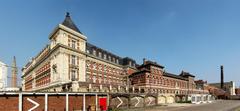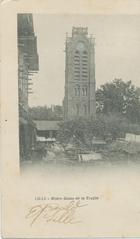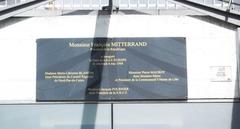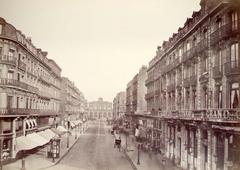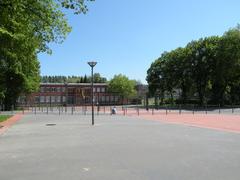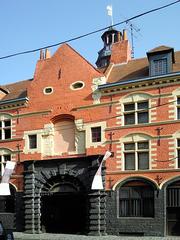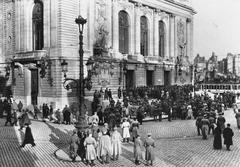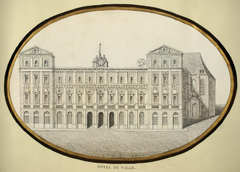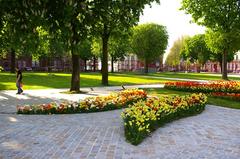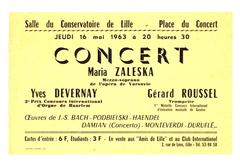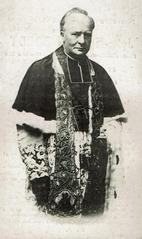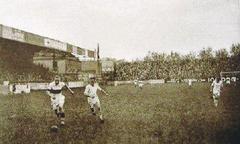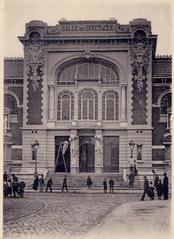Gustave Delory and Roger Salengro Monument: Visiting Guide, Hours, and History – Lille, France
Date: 14/06/2025
Introduction
In the heart of Lille, France, the Monument À Gustave Delory Et Roger Salengro stands as a distinguished tribute to two of the city’s most influential mayors. Gustave Delory (1857–1925) and Roger Salengro (1890–1936) were instrumental in forging Lille’s modern identity through social reform, urban development, and steadfast advocacy for workers’ rights. This comprehensive guide presents the monument’s history, visiting hours, accessibility, nearby attractions, and practical tips to enhance your experience in Lille.
For interactive planning, event updates, and guided tours, consider consulting Lille Tourism Office and the Audiala app.
Table of Contents
- Historical Background
- The Monument: Symbolism and Architecture
- Visitor Information
- Cultural Engagement
- Frequently Asked Questions (FAQ)
- Conclusion and Further Resources
Historical Background
Gustave Delory: Social Reform and Urban Modernization
Gustave Delory, Lille’s first socialist mayor, served from 1896–1904 and again from 1919–1925, during a period marked by rapid industrialization and urban growth. Delory was a driving force in improving public health, expanding affordable housing, and establishing municipal services such as public baths and sanitation. His policies reflected a strong commitment to social solidarity and the welfare of Lille’s working class, helping lay the foundation for the city’s progressive civic identity (History of Lille, Wikipedia; Ville de Lille).
Roger Salengro: Political Courage and Civic Progress
Roger Salengro continued Delory’s legacy as mayor from 1925 until his death in 1936. He led Lille through the challenges of post-WWI reconstruction, expanded social programs for vulnerable citizens, and completed major urban projects such as the Hôtel de Ville. Salengro also served as Minister of the Interior during the Popular Front government. His tragic suicide in 1936, following a political smear campaign, became a national symbol of the dangers of political extremism and slander (Wikipedia: Roger Salengro; France Archives).
Both Delory and Salengro remain emblematic of Lille’s enduring spirit of social justice and democratic engagement.
The Monument: Symbolism and Architecture
Erected in 1959, the Monument À Gustave Delory Et Roger Salengro is located in Place Roger Salengro, directly before the Hôtel de Ville de Lille. Sculpted by Robert Coin, the monument features realistic stone busts of Delory and Salengro atop a robust pedestal, inscribed with their names and years of service (Flickr: Morio60). Its dignified design complements the neo-Flemish and Art Deco architecture of the city hall, symbolizing the values of resilience, solidarity, and civic pride.
The monument serves as a focal point for official ceremonies, public commemorations, and educational programs. Its placement in a bustling civic square reinforces its status as a living part of Lille’s urban landscape (Lille Tourism; Ville de Lille).
Visitor Information
Location and Accessibility
- Address: Place Roger Salengro, 59000 Lille, France
- Landmarks: Directly in front of the Hôtel de Ville (City Hall) and adjacent to the Beffroi de Lille (Town Hall Belfry, UNESCO World Heritage Site) (Lille Tourism).
- Public Transport: Nearest metro – Mairie de Lille (Line 2), five minutes’ walk. Numerous bus routes and V’Lille bike stations are nearby (Transpole Lille). Public parking is available at Parking Hôtel de Ville and Parking Porte de Paris.
- Accessibility: Step-free access with paved paths, suitable for wheelchairs, strollers, and those with mobility challenges.
Visiting Hours and Admission
- Open Access: The monument is outdoors and accessible 24/7, every day of the year.
- Admission: Free. No tickets or reservations required.
For those interested in touring the interior of the Hôtel de Ville or ascending the Beffroi, consult the official Lille Tourism website for hours and ticketing.
Guided Tours and Visitor Tips
- Guided Tours: The monument is included in many city walking tours offered by the Lille Tourist Office. Tours are available in multiple languages. Booking ahead is recommended during weekends and holidays.
- Photography: Optimal lighting is during early morning or golden hour (late afternoon). The illuminated monument and city hall after dusk make for striking photos.
- Amenities: Public restrooms are available in the Hôtel de Ville during opening hours. Numerous cafés, shops, and restaurants are nearby.
- Safety: The area is well-patrolled and generally safe. Standard urban precautions are advised.
Nearby Attractions
- Beffroi de Lille: Climb the belfry for sweeping city views (Lille Tourism).
- Porte de Paris: A grand 17th-century triumphal arch.
- Palais des Beaux-Arts: One of France’s leading art museums (Mapcarta).
- Vieux-Lille: Explore the charming Old Town with its Flemish architecture.
- Grand’Place: The main square, vibrant with cafés and shops.
Cultural Engagement
The monument is a living symbol of Lille’s commitment to social progress and democratic values. Annual commemorations on the anniversaries of Delory and Salengro’s deaths, as well as public events on May 1st (International Workers’ Day) and July 14th (Bastille Day), draw civic leaders, labor unions, and citizens for wreath-laying and public readings (La Voix du Nord).
The site is also integrated into educational programs and cultural festivals, with temporary art installations and performances highlighting its ongoing relevance (Lille3000). Nearby archives and museums offer deeper exploration of Lille’s political history (Archives municipales de Lille).
Frequently Asked Questions (FAQ)
Q: What are the visiting hours for the Monument À Gustave Delory Et Roger Salengro?
A: The monument is outdoors and accessible at any time, day or night, year-round.
Q: Is there an entrance fee or ticket required?
A: No, the monument is free to visit.
Q: Is the site accessible for visitors with disabilities?
A: Yes, the plaza has step-free, wheelchair-accessible paths.
Q: Are guided tours available?
A: Yes, the Lille Tourist Office includes the monument in several city tours.
Q: What other historical sites are nearby?
A: The Beffroi de Lille, Palais des Beaux-Arts, Porte de Paris, and Vieux-Lille are all within walking distance.
Q: Can I take photographs?
A: Yes, photography is encouraged. The site is especially photogenic during golden hour and at night.
Conclusion and Further Resources
The Monument À Gustave Delory Et Roger Salengro is not just a work of art but a vibrant testament to Lille’s tradition of civic leadership, social justice, and resilience. Its central location, open accessibility, and integration into Lille’s cultural life make it an essential stop for anyone seeking to understand the city’s rich history.
For a deeper experience, download the Audiala app for guided tours, interactive maps, and event updates. Explore Lille’s other civic landmarks to fully appreciate the city’s unique heritage.
Useful Links
- Lille Tourism Office
- Monument À Gustave Delory Et Roger Salengro on Google Maps
- Official Lille City Website
- History of Lille on Wikipedia
- Flickr: Monument Photo
- France Archives: Roger Salengro Biography
- La Voix du Nord – Local News
